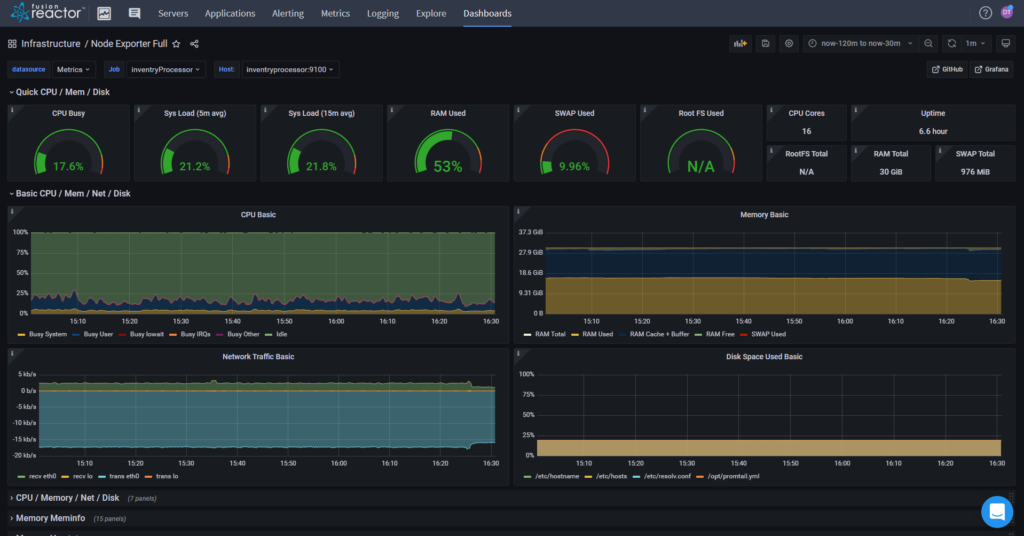Modernizing legacy ColdFusion applications with MVC and FusionReactor
Modernizing a legacy ColdFusion application can seem daunting, especially when dealing with complex, monolithic codebases. However, adopting an MVC (Model-View-Controller) framework can significantly streamline the process, making your application more modular, maintainable, and scalable. To ensure a smooth transition and optimal performance, leveraging a powerful monitoring tool like FusionReactor can be incredibly beneficial.
Understanding MVC frameworks:
What is an MVC framework?
An MVC framework divides your application into three interconnected components:
- Model: Manages the data and business logic.
- View: Handles the presentation layer, displaying data to users.
- Controller: Acts as an intermediary, processing user input and updating the Model and View accordingly.
Benefits of Using MVC frameworks
- Separation of concerns: Each component has a distinct responsibility, making the application easier to manage and maintain.
- Improved maintainability: Changes in one application part (e.g., the UI) do not affect the business logic or data layers.
- Scalability: Modular development allows for more manageable growth and the addition of new features.
- Testability: Isolated components can be tested independently, ensuring robust and reliable code.
- Reusability: Components such as data access modules or UI elements can be reused across different application parts.
ColdFusion and MVC
ColdFusion developers can choose from several MVC frameworks, such as ColdBox, FW/1 (Framework One), and more. These frameworks help organize code and promote best practices in application development.
1. Performance monitoring
FusionReactor offers detailed performance metrics, helping identify bottlenecks in your legacy application. By tracking transactions and providing insights into slow requests and database queries, FusionReactor ensures that your refactoring efforts improve performance rather than degrade it.
2. Error tracking
FusionReactor captures and logs errors in real-time, providing detailed reports, including stack traces and request details. This feature is invaluable for debugging and refactoring legacy code, promptly identifying and addressing issues.
3. Application profiling
The code profiler in FusionReactor identifies inefficient code and performance hotspots, which are essential for optimizing your application during the migration to an MVC framework. Additionally, the thread profiler helps diagnose thread contention and deadlocks, which is critical for maintaining application stability.
4. Resource monitoring
FusionReactor monitors CPU, memory, and disk usage, providing insights into how your application utilizes server resources. This information helps in planning and optimizing resource allocation during the migration process.
5. Database monitoring
With detailed insights into database performance, FusionReactor helps optimize database interactions as part of the refactoring process. Monitoring database connection pools also aids in identifying and resolving connection issues that could impact application performance.
6. User experience monitoring
FusionReactor offers Real User Monitoring (RUM) and synthetic monitoring to track user interactions and simulate user behavior. This helps understand how changes during the migration impact the end-user experience and ensures that performance and availability are maintained.
7. Proactive alerts
FusionReactor allows custom alerts to be set up for various performance and error conditions. Threshold-based alerts help proactively manage application performance and stability, addressing issues promptly.
8. Integration with CI/CD pipelines
FusionReactor can be integrated into CI/CD pipelines to monitor application performance and stability with each deployment. This integration is beneficial during incremental refactoring, ensuring that each change maintains or improves application quality.
Modernizing legacy ColdFusion applications
Adopting an MVC framework for your legacy ColdFusion application provides a structured way to modernize the codebase, enhance maintainability, and improve scalability. By leveraging FusionReactor, you can ensure the refactoring process is smooth, performance issues are promptly identified and resolved, and the application’s overall stability and user experience are maintained or improved.
Modernizing legacy applications is a challenging yet rewarding endeavor. You can transform your ColdFusion application into a modern, robust, and scalable solution with the right tools and frameworks. FusionReactor, with its comprehensive monitoring capabilities, is your ideal companion on this journey.












